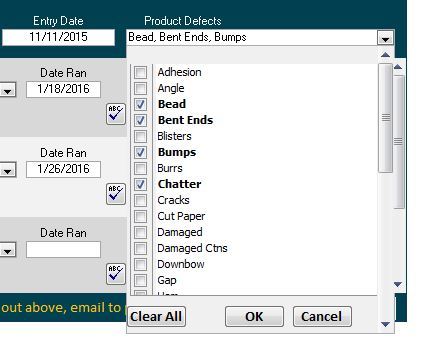Hello, I have a completed database and after reviewing and messing with it a lot and trying different scenarios I think I should have a multiselect listbox instead of a combo box on my main form. My question is right now I save my selection my table (tbl_Hold) field (ProductID) and the record source is of the combo box is:
SELECT [tbluProductDefects].[DefectID], [tbluProductDefects].[Defect] FROM tbluProductDefects ORDER BY [Defect];
I want to be able to save all the selected items I choose and when I open the form I want to be able to see the items that I choose in the listbox. What do I have to do to the table and the form?
Thanks,
SoggyCashew.....
SELECT [tbluProductDefects].[DefectID], [tbluProductDefects].[Defect] FROM tbluProductDefects ORDER BY [Defect];
I want to be able to save all the selected items I choose and when I open the form I want to be able to see the items that I choose in the listbox. What do I have to do to the table and the form?
Thanks,
SoggyCashew.....




